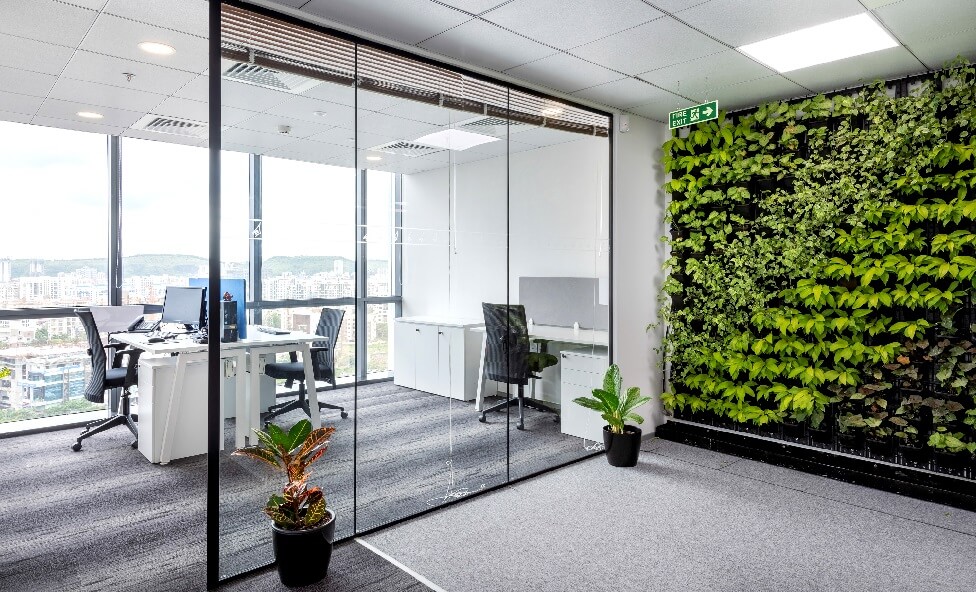In today’s fast-paced business world, designing an office space that promotes productivity and wellbeing is more important than ever. A well-planned office fit-out considers not only the functional aspects of the workspace but also fosters a positive work environment that supports employee satisfaction, collaboration, and overall performance. In this blog post, we will explore the key factors to consider when designing the perfect workspace, focusing on creating a balance between productivity and wellbeing.
Understanding the Importance of Office Fit-Outs
As businesses continue to evolve and adapt to modern work practices, the traditional office environment has undergone significant transformations. Today’s office fit-outs are no longer just about providing employees with a desk and a chair; they involve creating spaces that encourage collaboration, creativity, and mental wellbeing. A well-designed office fit-out can lead to numerous benefits, such as:
1. Improved employee productivity: An efficient and comfortable workspace allows employees to focus and work more effectively.
2. Enhanced collaboration and communication: Thoughtfully designed common areas and meeting spaces foster teamwork and interaction among team members.
3. Reduced stress and increased wellbeing: A pleasant and inspiring work environment can contribute to employee happiness, reducing stress levels and improving overall wellbeing.
4. Attraction and retention of talent: A modern and appealing office space can help attract top talent and encourage employees to stay with the company long-term.

Key Factors to Consider in Office Fit-Outs
To create a successful office fit-out that balances productivity and wellbeing, consider the following factors:
Ergonomics and Comfort
Ensuring that employees have comfortable and ergonomically designed workstations is essential for maintaining productivity and preventing work-related injuries. Invest in adjustable chairs and desks, monitor arms, and keyboard trays to create a customizable and comfortable workspace for each employee.
Natural Light and Biophilic Design
Incorporating natural light and elements of nature into the office design can have a significant impact on employee wellbeing and productivity. Large windows, skylights, and open floor plans can help maximize natural light, while incorporating plants, green walls, and natural materials can bring a sense of nature indoors.
Acoustics and Noise Control
Excessive noise can be a significant distraction and hinder productivity in the workplace. Consider incorporating acoustic panels, soundproofing materials, and designated quiet zones to create a balanced sound environment that allows employees to focus and collaborate effectively.
Flexible and Adaptable Spaces
Modern offices should be designed to adapt to the ever-changing needs of businesses and employees. Incorporate modular furniture, movable walls, and multi-functional spaces that can be easily reconfigured to support various work styles, team sizes, and project requirements.
Breakout and Relaxation Areas
Creating spaces where employees can relax and recharge is crucial for maintaining mental wellbeing and promoting creativity. Designate comfortable breakout areas with soft seating, calming colors, and recreational amenities, such as games or reading materials, to encourage employees to take breaks and socialize with coworkers.
Embracing the Future of Workspace Design
As the concept of work continues to evolve, office fit-outs must keep up with the changing needs and preferences of employees. Remote and hybrid work models are becoming increasingly popular, which means that office spaces must be designed to support flexible work arrangements. Additionally, as sustainability becomes a more significant concern, incorporating eco-friendly materials and energy-efficient systems into office fit-outs will become the norm.

Conclusion
In conclusion, designing the perfect workspace for productivity and wellbeing requires a thoughtful and holistic approach to office fit-outs. By considering the factors discussed in this blog post and embracing the future of workspace design, businesses can create an environment that supports the success and happiness of their employees, ultimately leading to improved performance and growth.

